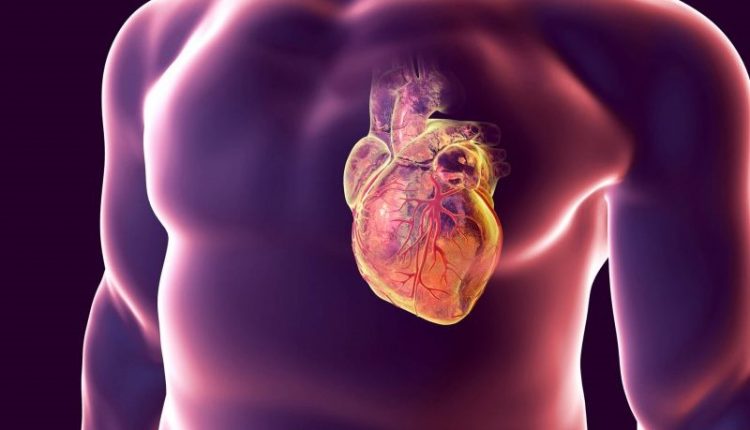
Cyanosis, arrhythmias and heart failure: what causes Ebstein's anomaly
First discovered in 1866, Ebstein’s anomaly presents as a downward displacement of the tricuspid valve, instead of the usual position between the right atrium and right ventricle
Depending on the severity of the malformation, affected patients may suffer from
- cardiac arrhythmias, due to the presence of abnormal conduction pathways
- symptoms of right congestive heart failure such as: enlarged liver, fatigue, dilated right atrium;
- cyanosis: as it is often associated with interatrial defect, the higher pressure due to tricuspid insufficiency causes oxygen-poor blood to flow from the right to the left side of the heart.
Those born with Ebstein’s anomaly suffer from insufficiency of the tricuspid valve, which does not close properly, and malfunction of the right ventricle.
It is a congenital heart disease of unknown cause that occurs when the tricuspid valve does not form normally during the development of the heart muscle.
The tricuspid valve connects the right atrium with the right ventricle of the heart; typically, the tricuspid closes completely when the right ventricle of the heart pumps blood into the lungs.
In Ebstein’s anomaly there will be valvular insufficiency, the tricuspid will not close completely and some of the blood contained in the right ventricle will return to the right atrium; the right atrium will dilate while the right ventricle will tend to shrink.
There may be, in some cases, other alterations such as fusion of a flap with the ventricle wall and may be associated with other cardiac abnormalities such as pulmonary valve stenosis and interatrial septal defects.
Ebstein’s anomaly affects about 1 in 50 to 200,000 individuals, whether male or female
Symptoms vary from patient to patient.
In mild forms, there are usually no symptoms or there may be difficulty breathing, fatigue, tachycardia.
In more severe forms there will be arrhythmias, cyanosis of the skin and mucous membranes as a consequence of insufficient oxygenation of the blood, and in more severe cases even heart failure.
Supraventricular tachycardia and the presence of Wolff Parkinson White Syndrome will be found more frequently.
The diagnosis, if too severe, may come as early as during ultrasound scans during pregnancy; symptoms may also manifest themselves at birth with cyanosis and breathing difficulties.
The tests to be performed are
- Electrocardiogram, thanks to which it will be possible to detect arrhythmias;
- Chest X-ray, which will make it possible to observe the dilated state of the heart in the most severe forms;
- Echocardiography, which will provide a detailed image of the heart in operation by detecting valvular insufficiency and dilation of the right atrium;
- Electrophysiological study that will be useful in understanding the origin of heart rhythm problems;
- magnetic resonance imaging, which will make it possible to precisely assess the volume of the right atrium and ventricle.
Pharmacological treatment aims to treat heart failure or arrhythmias.
If medical treatment fails, electrophysiological treatment for arrhythmias and surgical treatment for heart failure will be performed.
Surgical treatment of Ebstein’s anomaly may include
- Valvuloplasty: in certain cases, the surgeon may ‘repair’ the tricuspid valve in order to make it function normally;
- Valve replacement: the surgeon must replace the failing tricuspid valve with a tricuspid valve taken from a donated organ or animal;
- In more severe cases, when the right ventricle is much smaller than normal, complex surgery may be required; in certain cases, surgery may also correct rhythm disturbances.
During the neonatal period, in cases with severe tricuspid valve insufficiency, patients are cyanotic because pulmonary resistances are high, there will be increased regurgitation and abnormal blood flow from the right to the left atrium may occur.
When pulmonary vascular resistance decreases, as it normally does after the neonatal period, there will be a reduction in tricuspid regurgitation and cyanosis.
In early childhood, there may be rapid improvement in cardiovascular conditions and patients may not experience symptoms for years.
Read Also
Emergency Live Even More…Live: Download The New Free App Of Your Newspaper For IOS And Android
Semeiotics Of The Heart And Cardiac Tone: The 4 Cardiac Tones And The Added Tones
Heart Murmur: What Is It And What Are The Symptoms?
Branch Block: The Causes And Consequences To Take Into Account
Cardiopulmonary Resuscitation Manoeuvres: Management Of The LUCAS Chest Compressor
Supraventricular Tachycardia: Definition, Diagnosis, Treatment, And Prognosis
Identifying Tachycardias: What It Is, What It Causes And How To Intervene On A Tachycardia
Myocardial Infarction: Causes, Symptoms, Diagnosis And Treatment
Aortic Insufficiency: Causes, Symptoms, Diagnosis And Treatment Of Aortic Regurgitation
Congenital Heart Disease: What Is Aortic Bicuspidia?
Atrial Fibrillation: Definition, Causes, Symptoms, Diagnosis And Treatment
Ventricular Fibrillation Is One Of The Most Serious Cardiac Arrhythmias: Let’s Find Out About It
Atrial Flutter: Definition, Causes, Symptoms, Diagnosis And Treatment
What Is Echocolordoppler Of The Supra-Aortic Trunks (Carotids)?
What Is The Loop Recorder? Discovering Home Telemetry
Cardiac Holter, The Characteristics Of The 24-Hour Electrocardiogram
Peripheral Arteriopathy: Symptoms And Diagnosis
Endocavitary Electrophysiological Study: What Does This Examination Consist Of?
Cardiac Catheterisation, What Is This Examination?
Echo Doppler: What It Is And What It Is For
Transesophageal Echocardiogram: What Does It Consist Of?
Paediatric Echocardiogram: Definition And Use
Heart Diseases And Alarm Bells: Angina Pectoris
Fakes That Are Close To Our Hearts: Heart Disease And False Myths
Sleep Apnoea And Cardiovascular Disease: Correlation Between Sleep And Heart
Myocardiopathy: What Is It And How To Treat It?
Venous Thrombosis: From Symptoms To New Drugs
Cyanogenic Congenital Heart Disease: Transposition Of The Great Arteries
Heart Rate: What Is Bradycardia?
Consequences Of Chest Trauma: Focus On Cardiac Contusion
Performing The Cardiovascular Objective Examination: The Guide



